There are seven species of Sea Turtle,
and two are quite common on Diego Garcia,
Greens, mostly on the sea-side, and Hawksbills,
which could be found in the lagoon year round,
often at high tide up inside the various
barachois, feeding on the algae that lived on
the coral shelves.
Of course, just where you find them
doesn't define the species! Here's a
comparison of the two species you can expect to
find in the waters around DG:
Hawksbill:
It's an
endangered species, but found in all the
oceans of the world, in tropical waters.
It has been found as far north as Alaska in
the Pacific. It's the smallest of the
sea turtles, growing to only about 3 feet
long, but packing a lot of meat in that short
distance - adults typically weigh between
75-125 pounds! Young Hawksbills are
'tortoise-shell' in color, and adults are dark
greenish-brown. They eat sponges, sea
turds, shell fish and sea urchins.
Supposedly adults eat the same, but I have
personally sat on the beach and watched adult
Hawksbills chow down on algae on the rocks in
the lagoon. In any event, they like to
live right up in the reefs and rocks near the
shore.
Green:
First off, it's
skin and shell are colored BROWN. It gets the name Green
from the color of it's fat. If you've
ever had turtle soup, it's green because it's
rendered fat from Green Sea
Turtles. They eat this soup in the
Med, Atlantic, Gulf of Mexico, and across the
Indo-Pacific - i.e., where you find
Greens. The Filipinos and Mauritians on
the contractor staffs can tell you how to cook
a big turtle... But don't! The adults
are longer and much, much heavier than their
cousins the Hawksbills. A large adult
will be 4 feet long and weigh over 500
pounds. Youngsters eat jellyfish and any
other sea creatures that they can catch.
Adults eat sea grasses and algae.
FIELD
IDENTIFICATION:
Now, unless you are pretty experienced
with sea turtles, you might confuse a Hawksbill
and a Green. But there are
identifying characteristics of the two species
that will help (we won't get into the comparison
of sexes, as you shouldn't be that close to the
damn things to tell):
Hawksbill:
-
4
pairs of sharp, overlapping
(aft-over-fore) coastal scutes (the
plate-like armor on the shell between the
center-of-the-back scales and the row of
edge scales).
- The aft coastal scutes
on each side connect in the middle of the
aft back.
- A narrow jaw with a
distinct overbite
- 2 claws on each front
flipper.
Green:
-
4
coastal scutes, none of which overlap
or connect.
-
A
single large scale at the base of the
spine.
-
A
serated jaw.
-
Only
1 claw on each front flipper.
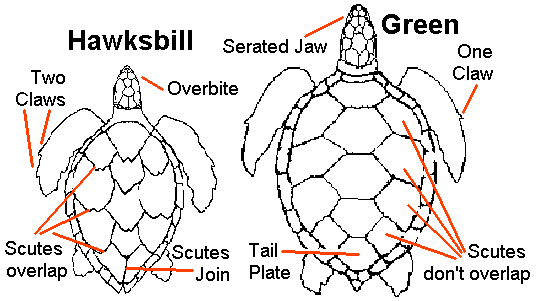

Turtle Soup... Or Turtle
Rescue? You Be The Judge!
Occassionally
sea turtles could be found stranded by the
retreating tide, especially Greens on the ocean
side. Remember, the coral shelf went out
for hundreds of yards - if stuck, the turtle
only had one chance - to wait and hope it didn't
cook before the tide came back in.
Although this surely has been going on
since the age of the dinosaurs, no sympathetic
person could stand seeing one stuck in hot,
shallow water with the sun beating down, and the
tide not due in for several hours. Here
are some a typical rescues:
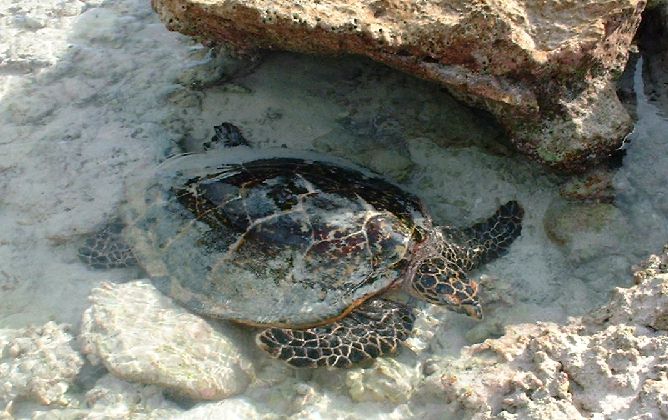
Typical
sight. A young Green Sea Turtle in a
tide-pool, getting hot and trying to find
shade under the rocks.

Well meaning
rescuers! Now, none of you bleeding
heart green-peacers give me a hard time about
this. The turtles were NOT harmed in any
way, and released into the sea!
Eco-freaks aren't the only people authorized
by God himself to save defenseless creatures!
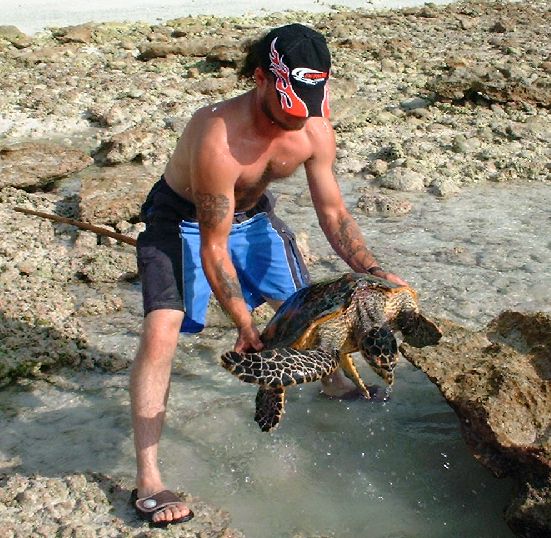

GREEN SEA
TURTLES - NESTING
The Green Sea
Turtle, an endangered species, nests regularly
on the sea-side of Diego Garcia. The come
in seasonally, and unlike their harrassed
cousins in populated areas, come ashore to nest
in broad daylight as well as at night. A
stroll along the beach after a really high tide
would reveal tracks and it was easy to find
nests (which neither I nor anyone else I knew,
did not open!). A couple months later, you
would find the nests opened by the hatchlings,
with the leathery eggs "shells" all over the
place, and little tracks leading down to the
water, just like on a Jacques Costeau TV
show. Not everyone was so unlucky to only
find the tracks and nests. Since the
Greens would come up to nest during daylight,
some folks were fortunate enough to see the
event! Here are some photos from 2002 by
Bob Ralph showing the arrival, the act, and the
departure!
Note the flotsam
on the beach and in the nesting area. NONE
of this stuff is from DG. It washes up
from ships and shores thousands of miles away!
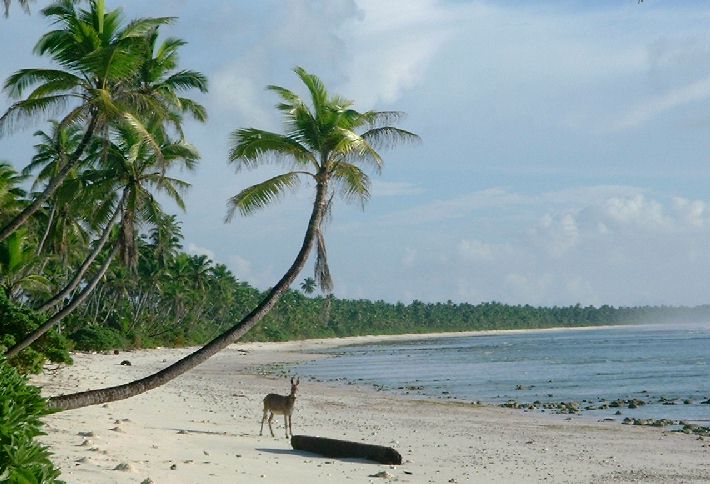
A Typical Nesting Beach. The tide
is out in this picture. At high tide, it
will be up to where the donkey is standing.
Well, here's momma on her way up to
the Scavy.
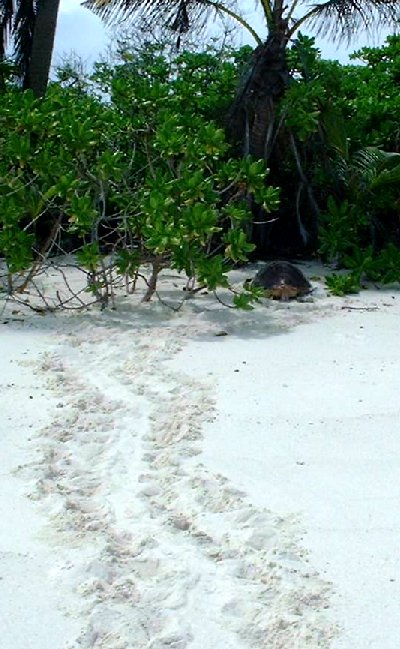
This is definitely a Green - note the
tail plate and the scutes don't overlap.
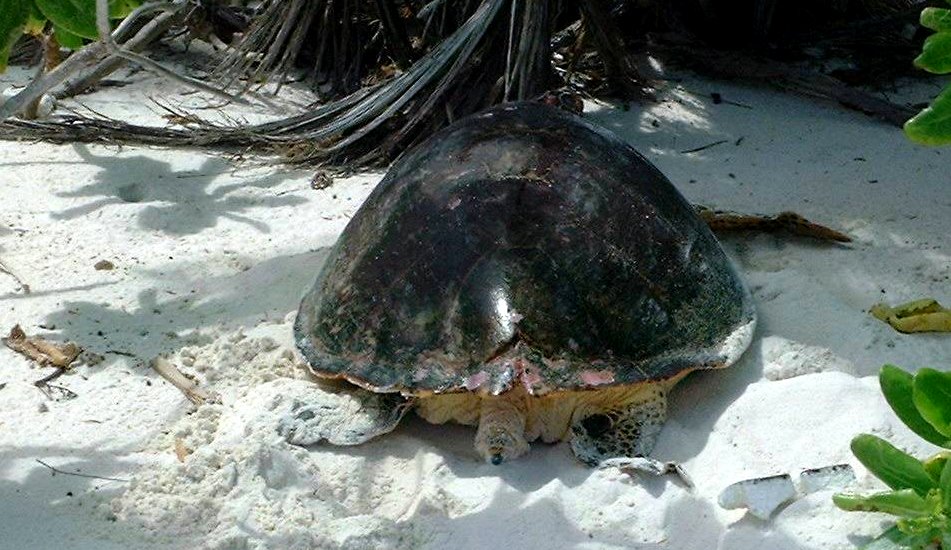
Here she is,
digging in to lay the eggs. How sad
that the countries around the IO use it as
their dumping ground and poor ol' momma has
to nest amongst the cast off sneakers,
styrofoam, fishing bouys, and water bottles.
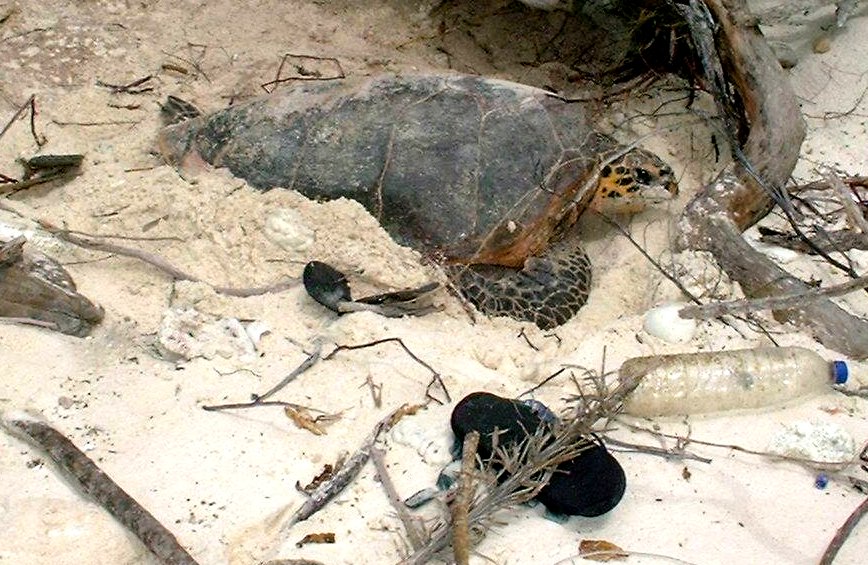

Mission
Accomplished! The whole thing
only took about half an hour.
Now back to the ocean for another year
before she comes back!
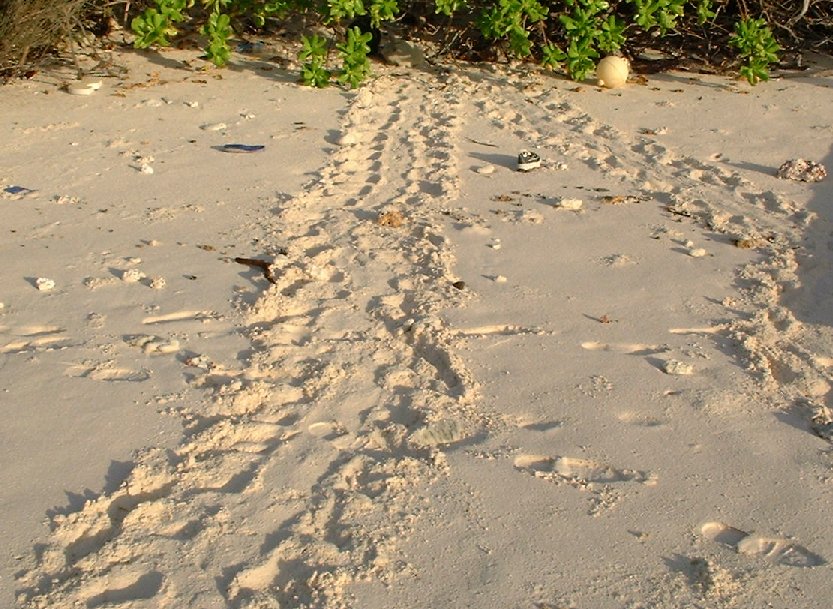

A Hawksbill
in the lagoon:
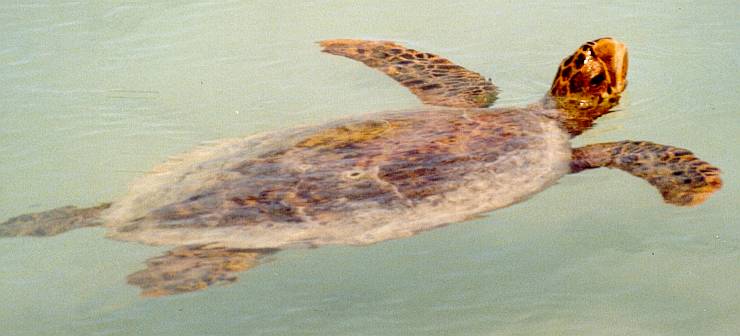
 |








